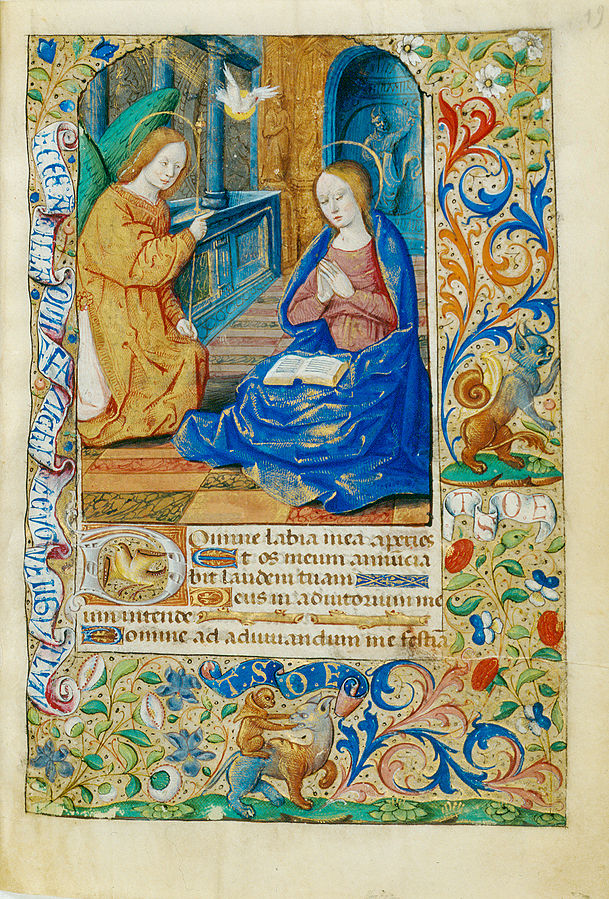The Medieval Era
In the late Middle Ages, repeated plague epidemics swept over Europe, indiscriminately killing rich and poor alike. In the absence of scientific explanations for such epidemics, Christians widely came to conceive of them as punishments imposed by a wrathful God.
Meanwhile, the Church, with the Pope in Rome at its head, had come to teach that eternal
salvation could only be achieved through partaking of the sacraments or holy rituals
of the Church. In some ways, Penance, or confession, became the most important sacrament.
Penance consisted of contrition, or feeling sorry for one's sins, confession of one's
sins to a priest, and performing certain works of satisfaction or punishments imposed
by one's priest. If one failed to confess a major sin, one went straight to hell.
Most people, it was assumed, confessed their major sins and went to purgatory for
a period of purification of their lesser sins in preparation for admission to heaven.
The Church also taught that by making donations to the church people could acquire
indulgences, either for themselves, or for others. By purchasing indulgences, people
could shorten their own time, or their loved ones' time, in purgatory. The indulgence
trade flourished, but many people questioned the theology and the fairness of this
practice, which in a sense offered salvation for sale, and favored persons who had
more purchasing power than others.

Page from a Book of Hours
Before the invention of the printing press, and even for some time thereafter, prayer
books were hand-copied. The manuscripts commissioned by wealthy individuals were often
elaborate and costly, such as this one that belonged to Duke Cristoph I of Württemberg
(1515-1568). This prayer book is in Latin, but with the advent of the printing press,
German prayer books began to be printed as well.
Credit: The Book of Hours of Christoph I, ca. 1500: The Annunciation. Manuscript of
Badische Landesbibliothek, Karlsruhe Codex Durlach 1, Fol. 19r. https://de.wikipedia.org/wiki/Datei:Codex_Durlach_1_19r.jpg
Incense censer
“Let my prayer be counted as incense before you, and the lifting up of my hands as
an evening sacrifice” (Psalm 141:2). Incense played a significant role in medieval
Catholic ritual.
Lent by Dr. Austra Reinis
“The Nativity of Christ”
Porcelain dish featuring a page from a medieval prayer book from the collections of
the Bibliotheca Apostolica Vaticana in Rome.
Lent by Dr. Austra Reinis
Gutenberg Bible, Facsimile
([Paris]: Editions les Incunables, 1985)
Before the invention of the printing press, all Bibles were hand-copied, usually by
monks working in monastery libraries. This is a facsimile of the first printed Latin
Bible. It was produced by the printer Johannes Gutenberg in Mainz, Germany, between
1452 and 1454.
Property of Meyer Library
Page from a French Book of Hours
Monks and nuns in the Middle Ages prayer seven times a day. Laypersons who were religiously
inclined often imitated this practice; the prayer books they used came to be known
as “Books of Hours.”
Property of Meyer Library
Medieval Pilgrims’ Tokens
Pilgrims’ tokens like these were bought by the faithful as souvenirs of their pious
journeys to holy sites. Historians and archeologists have shown how small industries
developed around shrines specializing in the manufacture and sale of such items. Chaucer’s
Canterbury Tales offers some of the richest and most revealing descriptions of medieval
pilgrimage, which took place across Western Europe and further afield to the Holy
Lands of Palestine.
Lent by Dr. Eric Nelson
Statue of St. Joseph, Found in a Yard in Springfield, MO
Statues of Saint Joseph, the patron saint of home sales, are often buried upside down
in home sellers’ yards in hopes that the house will sell faster. This practice dates
back to the 1500s when a group of nuns in Europe buried medals of St. Joseph, praying
for more land for crops and livestock. Statues are now sold in kits that include instructions
for completing the ritual, and a prayer card. After the home is successfully sold,
the seller is instructed to dig up St. Joseph and put him in a place of reverence
in his or her new home.
Lent by Lindsey Seevers-Arnold